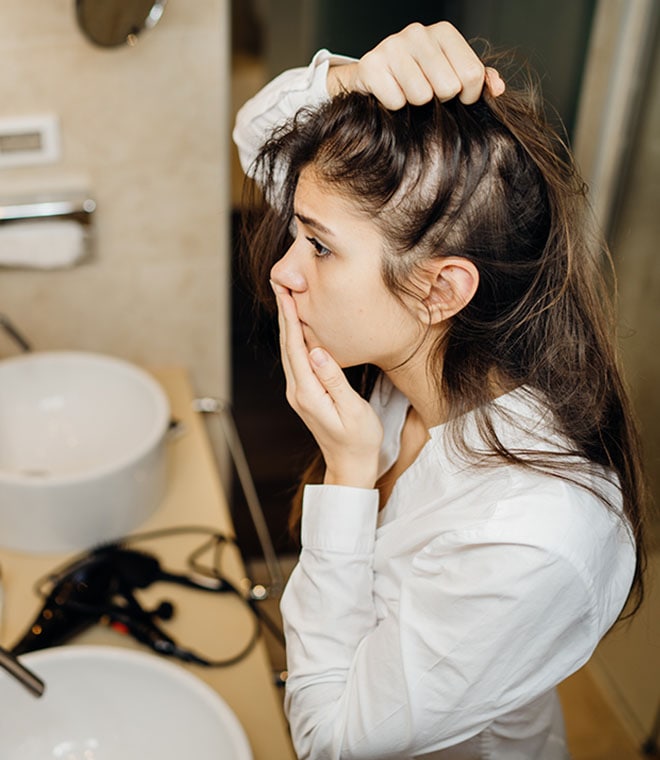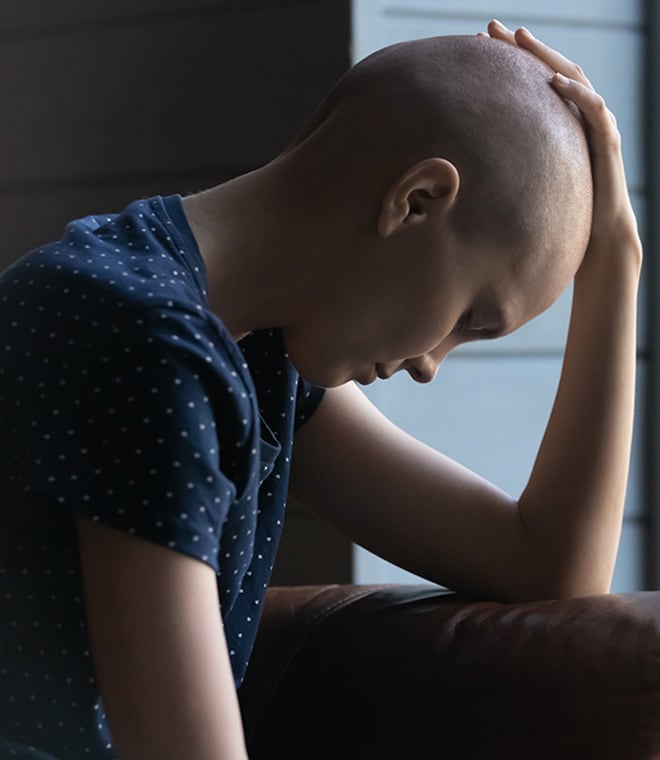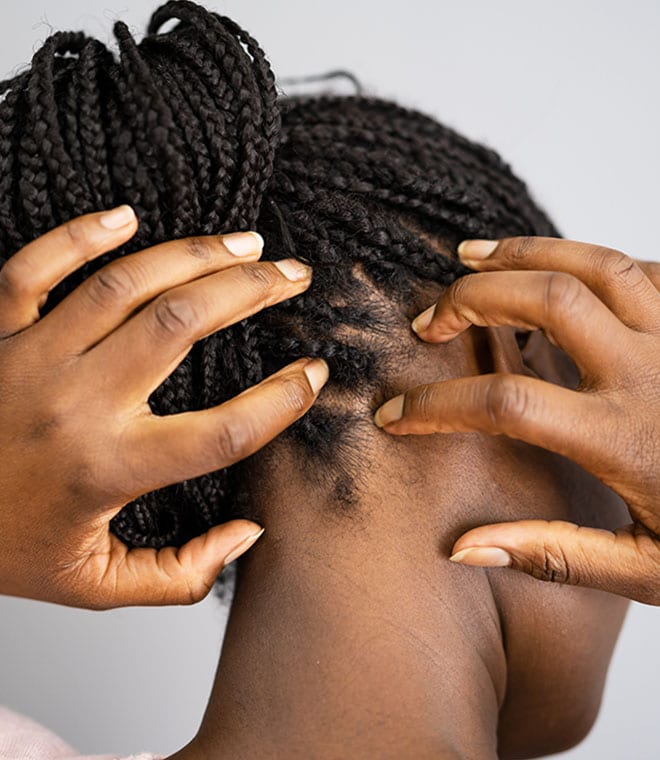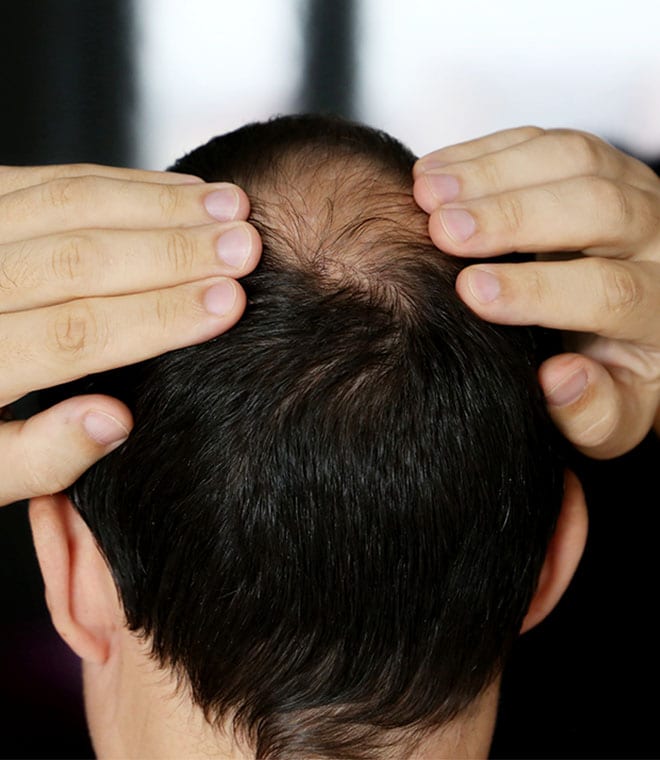Health
Autoimmune hair loss: Causes, symptoms and treatments for alopecia areata
By Anna H. Chacon, MD, Fellow of the American Academy of Dermatology Jan 27, 2025 • 7 min
Almost 7 million people in the United States have alopecia areata (AA), a form of autoimmune hair loss. Roughly 2% of all Americans will develop this condition at some point in their lives. Although the scientific community continues to work to fully understand autoimmune hair loss, treatment options are available to address the symptoms of alopecia areata.
What is alopecia?
Alopecia is a general term for hair loss. It can describe a bald spot or losing hair in patches due to an autoimmune condition. Alopecia can also be used to describe losing all hair due to chemotherapy, as well as age-related male pattern baldness. Confusion arises because people outside the medical community often use the word alopecia to describe a total loss of hair caused by immune system function, but in fact, healthcare providers may apply this term to anyone suffering from any kind of hair loss.
What is alopecia areata?
Alopecia areata is a type of hair loss that occurs when the immune system doesn't function properly. Normally, the immune system acts as a line of defense against harmful microorganisms. In people with alopecia areata, the immune system mistakes the hair follicles as a threat. This immune system response leads to inflammation that causes hair to fall out.
What are the causes of alopecia areata?
Doctors don't fully understand what triggers the immune system response that leads to autoimmune hair loss. However, research has uncovered some potential risk factors, including:
- Genetics: About 20% of individuals with alopecia areata have one or more family members with the condition. Scientists believe the number may be higher because many people don't discuss hair loss with their medical providers.
- Other immune system conditions: Individuals with allergies, thyroid conditions like hypothyroidism, hay fever and atopic dermatitis, are at an increased risk of alopecia areata.
- Other medical conditions and disorders: People with Down syndrome, vitiligo, pernicious anemia and thyroid disease have a higher risk of developing alopecia areata.
- Nivolumab: This drug used to treat different types of cancer often causes alopecia areata as a side effect.
What are the common symptoms of alopecia areata?
The primary symptom of alopecia areata is hair loss. Typically, alopecia areata causes hair loss in patches, often on just one side of the head, with patchy bald spots developing. A person may also experience the loss of facial hair, including the eyebrows and eyelashes. Some people also lose hair in the nose, ears and underarm area.
In some individuals, autoimmune hair loss leads to alopecia totalis, a total loss of scalp hair that leaves a person completely bald. Very rarely, the condition results in alopecia universalis, or a complete loss of all hair on the body.
Hair loss due to alopecia areata tends to happen rapidly and unpredictably. Some people experience hair loss and hair growth in the same area of the body.
Other possible alopecia areata symptoms include:
- “Stippling” and “pitting” (rows of tiny dents) of the fingernails
- Hairs shaped like exclamation points with a wide tip and a narrow base near scalp
- Increase in gray or white hairs in areas of hair loss
- Burning, tingling or itching of the skin prior to hair loss
For many people, alopecia areata symptoms may be seasonal. In the United States, individuals with autoimmune hair loss often experience flare-ups between October and January. Hair then often regrows throughout the rest of the year.
What are some treatment options for alopecia areata?
Healthcare providers may prescribe a variety of treatments for alopecia areata. In some cases, you may receive more than one treatment, or you may need to try multiple treatments until you find one that is effective for you.
Alopecia areata treatment options include:
- Minoxidil. This topical scalp treatment helps stimulate hair regrowth and is suitable for use on the scalp, beard and eyebrows. Most people with alopecia areata may need to apply it two to three times per day. If the medication is effective, you will likely need to continue to use it to maintain regrowth.
- Corticosteroids. These medications work by reducing immune system function to combat inflammation. Your healthcare provider may give you a corticosteroid injection in office or prescribe a steroid cream, lotion or pill.
- Anthralin. This topical treatment is typically used for psoriasis, but healthcare providers may prescribe it for autoimmune hair loss. Some people use anthralin in combination with minoxidil.
- Topical immunotherapy (contact immunotherapy). In this treatment, chemicals are applied to the skin to intentionally cause an allergic rash and alter the immune response.
- JAK (janus kinase) inhibitors. These prescription oral medications may help reduce inflammation caused by the immune system, which may help hair growth return. A few medications that have been approved by the U.S. Food and Drug Administration (FDA) for treatment of alopecia areata include baricitinib (Olumiant), Deuruxolitinib (Leqselvi), and Ritlecitinib (Litfulo).
Scientific research continues to unveil new treatments for alopecia areata. Your healthcare provider may encourage you to join research studies that can give you access to medications that are currently in development.
If you have symptoms of alopecia areata, see your healthcare provider. They can conduct diagnostic tests to determine if your hair loss is due to alopecia areata. They can also advise you on which alopecia treatments may be right for you.
Updated by Julie McDaniel, MSN, RN, CRNI, January 2025.
Sources:
- https://www.niams.nih.gov/health-topics/alopecia-areata
- https://www.naaf.org/alopecia-areata/related-conditions/
- https://www.aad.org/public/diseases/hair-loss/types/alopecia
- https://www.aocd.org/page/AlopeciaAreata
- https://www.naaf.org/alopecia-areata
- https://www.naaf.org/alopecia-areata/alopecia-areata-treatments
- https://www.health.harvard.edu/a_to_z/alopecia-areata-a-to-z
- https://www.aad.org/public/diseases/hair-loss/types/alopecia/causes
- https://medlineplus.gov/genetics/condition/alopecia-areata/#causes
- https://www.naaf.org/diagnosis/
- https://www.merckmanuals.com/professional/dermatologic-disorders/hair-disorders/alopecia-areata
- https://www.aad.org/public/diseases/hair-loss/types/alopecia/treatment
- https://www.aad.org/public/diseases/hair-loss/types/alopecia/symptoms
- https://www.cancer.gov/about-cancer/treatment/drugs/nivolumab




